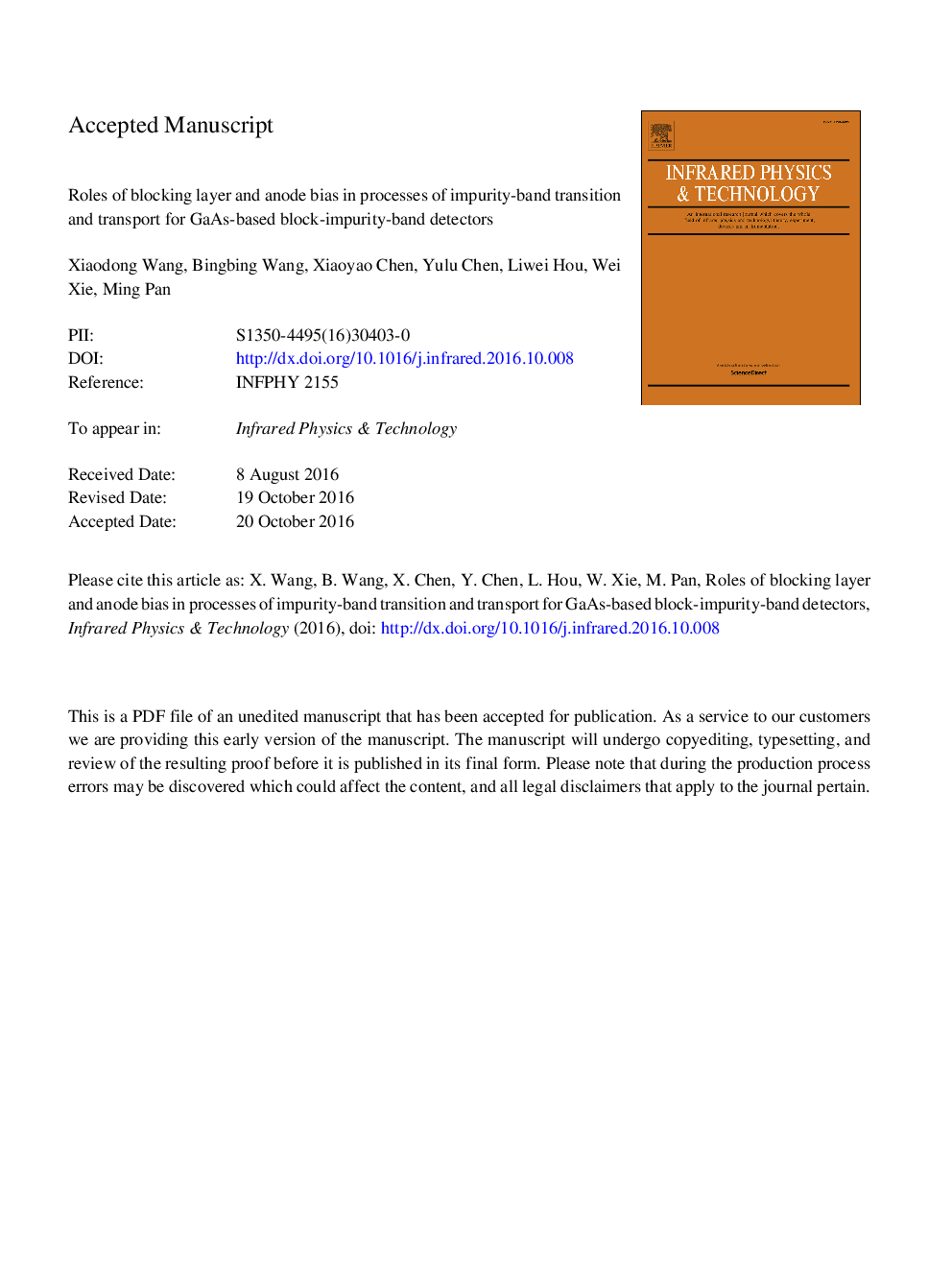| Article ID | Journal | Published Year | Pages | File Type |
|---|---|---|---|---|
| 5488512 | Infrared Physics & Technology | 2016 | 16 Pages |
Abstract
Recently, GaAs-based BIB detector has attracted a lot of attention in the area of THz photovoltaic detection due to potential application values in security check and drug inspection. However, the physical mechanisms involving in carrier transition and transport are still unclear due to the poor material quality and immature processing technique. In this paper, the dark current and THz response characteristics have thus been numerically studied for GaAs-based blocked-impurity-band (BIB) detectors. The key parameters and physical models are constructed by simultaneously considering carrier freeze-out and impurity-band broadening effects. Roles of blocking layer and anode bias in processes of impurity-band transition and transport are intensively investigated, and the results can be well explained by numerical models. It is demonstrated that the effective electric field for the detector is only located in the absorbing layer, and can determine to a large extent the magnitude of the dark current and THz response. While the blocking layer not only can suppress dark current but also can attenuate responsivity due to its electric-field modulation effect.
Related Topics
Physical Sciences and Engineering
Physics and Astronomy
Atomic and Molecular Physics, and Optics
Authors
Xiaodong Wang, Bingbing Wang, Xiaoyao Chen, Yulu Chen, Liwei Hou, Wei Xie, Ming Pan,
